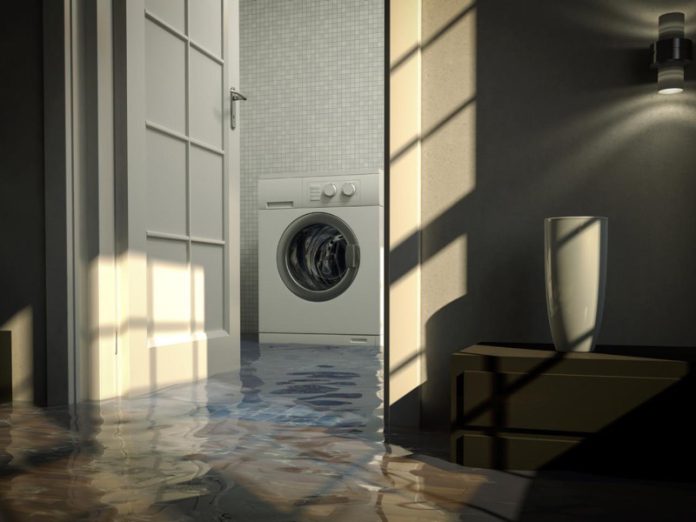Water leakage in basement areas is a nightmare for each building owner. However, it’s one of the most common establishment problems you have to face now and then, especially if your structure’s location is near flood-prone areas.
It would be best if you learned about its root first to give a proper solution to the imminent issue. Hence, in this article, you’ll discover the different causes of water leakage in your basement to help you see which ones you can avoid keeping the area dry even during a heavy storm. Of course, you can also jot down some valuable tips that you can apply to solve the leaking concerns immediately.
Five typical causes of water leakage in the basement
-
Interior leakage and basement condensation
Before you inspect the other reasons, you must first check the welfare of your interior when you discover a leak in your basement. This step should come first in the line, as many owners tend to carry out repairs without fully knowing that the real problem lies in their poor plumbing pipe or your other home areas, like shower, toilet, sink, washing machine, or dishwasher. Therefore, doubling their damage repair expenses.
Moreover, basement condensation happens when the humid air meets your house’s cool wall and floor temperature, leading to massive moisture build-up inside the lowest floor o your building.
-
Lacked or damaged gutters and downspouts
Check whether your basement lacks essential utilities such as gutters and downspouts. If you have, then inspect it again for any potential damage.
Remember that gutters and downspouts are vital in your basement and designated for channeling the outburst of water elsewhere, away from your home. Furthermore, it requires routine maintenance to ensure impressive function always, so if you missed it, you better call your specialist now.
-
Inefficient establishment grading
Your basement contractor usually performs an 8-foot hole dug grading during home construction to ensure that the ground around your foundation slope places away from your house. Once done setting the foundation, builders fill it with loose soil, which, unfortunately, shrinks and creates a downward slope over time. As water naturally follows the slope, it leads the drain toward your house and penetrates any crack found, causing basement leaks.
-
Building foundation cracks
As mentioned, cracks in your basement area can serve as a passageway for the water to come inside. You should pay attention to the most complicated and superficial cracks and act on them instantly to avoid huge damages and fixture expenses in the future.
-
Weak drain tile and sump pump
If your building has a basement, drain tile and a sump pump is two important additions to guarantee an effective waterproof system downstairs. Drain tile functions as a water collector around your basement foundation and points the gathered water to one of two places.
On the other hand, you can see the sump pump in leveled and unslanted houses. It pumps away from the foundation all the water directed here. If you have these utilities, but still water leakage occurs, there’s a possibility that your equipment is dysfunctional already, requiring replacement.
Now you know the usual causes of water discharge in your basement. Let’s now proceed to tackle the variety of solutions you can implement to keep the lowest floor in your building away from future leaking occurrences
- Consider adding gutter extensions
If you’re looking for a temporary but quick solution to your basement’s water leakage, incorporating plastic or metal gutter extensions into your downspouts can aid in pushing the water more than 5 feet away from your home. On the other hand, if you seek a long-term solution, consider installing a seamless underground drain pipe that can collect much bigger gutter drains and direct them at a greater distance.
- Close cracks or gaps
Plugging gaps using hydraulic cement or polyurethane caulk is the best and most instant solution to resolve water leaks from plumbing pipe holes or any other basement surface cracks. However, if the leakage happens between the meeting section floor and walls, it’s a much colossal problem that a simple plug can’t fix.
- Install floor access panels
If your building operates in a high-risk flood location, it’s only appropriate to equip your basement vicinity with a floor access door. Its exceptionally crafted panel type makes the lowest floor in your establishment floodproof. Preparing an adequate flood prevention plan can contribute greatly to the lasting value of your structure.
- Fix footing drains
As stated, when the water leakage comes from the low part of your walls or at the seams where your walls and floor meet, it’s a much more complicated issue called hydrostatic pressure. It’s the situation wherein the water gets pushed up from the ground.
Usually, footing drains, also known as underground pipes, can help alleviate this concern, but if leaks are still seeping, check whether the tool got clogged. You can also reach your local plumber in case simple cleaning won’t make the utility function again.
- Attach curtain drains
Apart from the footing drain, you can use another drainage system called a curtain drain to divert water away from your home. It’s generally a French drain that makes a shallow trench 2 feet deep and 1.5 feet across.
It brims with gravel and perforated piping, capable of intercepting water flowing toward your house. It turns it to a safe distance to prevent water from leaking into your basement.
Upgrade expenses are better than damage expenses
Your basement oft-times holds some of your most prized or treasured items, as this area often serves as an additional storage facility for your commercial building. Thus, it would be best if you noted the proper care measurements shared in this blog post to prevent water leakages from destroying things that are precious to you. Enhancing your basement floor is an excellent investment to make your commercial building last a long time.















